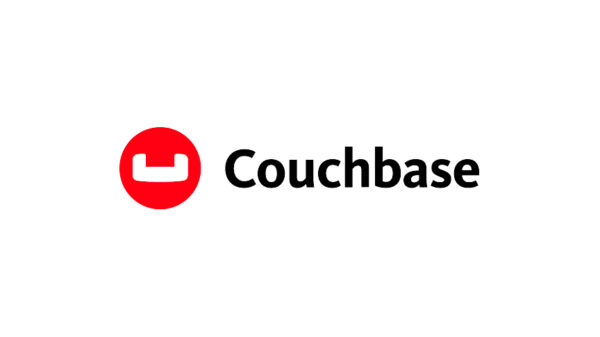By Leo Leung
Vice President, Product Management, Oracle Cloud Infrastructure
Now that we’re well into the second decade of cloud computing, it’s time to reexamine the received wisdom that has come to surround this IT deployment model. In early days — when there was basically one public cloud — focusing your efforts on a single cloud made sense. But now that there are several capable cloud options, it’s time to brush the old tropes aside and accept that multicloud adoption makes sense both technologically and economically.
Let’s examine the facts versus fiction.
Myth number 1: Nobody uses multicloud in production
Untrue. Virtually every IT research company says multicloud is a strategic imperative for businesses. In a survey, Gartner found that 81% of companies have a multicloud strategy in place and IDC dubbed 2021 “the Year of Multicloud.”
If you need specifics, look at companies like Mynet, which hosts popular online games. It uses seven clouds, including Oracle Cloud Infrastructure (OCI), to ensure high availability of its many titles.
Or check out GoTo, the remote-work pioneer, which uses Kubernetes container management to run workloads on OCI and Amazon Web Services.
In the case of both GoTo and Mynet, the use of multiple clouds brings better resiliency and availability — if one provider suffers a glitch, operations can be routed to another to keep customers online. That’s the very definition of smart IT deployment.
Myth number 2: Multicloud costs more than a single cloud
Nope. Different public clouds offer an array of computing, networking, and storage services, and prices for each can vary widely among providers. One benefit of increased cloud competition is that some providers offer extremely competitive pricing for certain categories of service. Remember: Just because one company claims to be the low-cost leader across the board doesn’t make it so.
If your business requires shipping lots of data to end users, you definitely need to pay attention to “data egress” or “network outbound” fees charged by the different providers. They add up dramatically (sometimes catastrophically) if demand surges unexpectedly. One interactive video service is saving 80% on its data egress charges by using Oracle Cloud Infrastructure (OCI) instead of AWS, for example.
Before launching OCI in 2016, Oracle did the math and realized it could offer outbound networking at highly competitive prices and still make money. Last November, Oracle took another step in joining the Bandwidth Alliance, kicked off by Cloudflare, to combat these unfair networking charges.
Cutting the cost of data transit between clouds will remove a huge obstacle to multicloud adoption.
Myth number 3: Multicloud is slow
Also false. While latency — or delay — can be an issue in data transfer especially over long distances, this is less relevant now because all the cloud providers locate (or “co-locate” in tech speak) their physical infrastructure near each other’s. This proximity — in some cases different rooms within the same colocation facility — means millisecond latency between clouds. This, plus the addition of more cloud data center regions worldwide, means the distances between cloud regions are shrinking.
In addition, some major cloud providers have directly connected their respective clouds. Oracle and Microsoft, for example, teamed up on Oracle Azure Interconnect to provide fast private data flow between OCI and Microsoft Azure. This enables the many companies that run databases and applications on OCI and other applications and analytics on Azure with round-trip latency of 1.2 ms to 2.1 ms. That’s fast enough for most any enterprise requirement.
Using the Oracle Azure Interconnect, Integra LifeSciences, a leading medical devices company, migrated its ERP and supply chain software to OCI and connected it analytics on Azure, speeding operations by as much as 90% and boosting efficiency in the process.
Myth number 4: Multicloud is too complicated
Uh uh. This argument has been recycled throughout the history of information technology. Companies are told they must consolidate vendors to simplify operations and support. The problem is that different providers excel in different areas, and over reliance on one means the customer loses leverage when it comes to purchasing power.
Oracle and Microsoft, on the other hand, believe their customers are smart enough to handle “complexity,” like they did for decades on-premises, and are working to ensure their joint customers can use their applications of choice on their cloud of choice. A key aspect of the Oracle Azure Interconnect addresses that complexity by allowing businesses to use OCI Identity and Access Management or Azure Active Directory for single-sign access to resources running on either cloud.
Smart vendors can read the writing on the wall and will roll out more services to make interoperability between clouds easier. It helps that many popular open-source software packages — for example MySQL and Kubernetes — already run on all the major clouds.
Multicloud management and monitoring tools are only going to improve and expand as more customers and providers adopt multicloud strategies. Oracle will have more to say on running open-source databases across clouds as well as on multicloud observability and management fronts soon.
The multicloud model will abide
The real fact is, as more corporate data and workloads flow to the cloud (I should say clouds), business customers will use the services that best fit their needs, regardless of which provider runs them.
At the same time, businesses will weigh price differentials between clouds on basic compute, storage, and networking services. In particular they will insist that charges for the flow of data between clouds, or from their clouds to their own customers, be affordable and free of tacked-on charges.
Over the relatively short history of cloud computing, we were first told that no one would ever move anything to the cloud. Then, fingers wagged that no one would move “production” or strategic data into the cloud. Later, we were warned about the dangers of multicloud. These much-espoused certainties turned out to be fleeting because technology abhors a vacuum and business leaders like having options.
Today’s reality is as different from the past as the future will be from today. The one happy constant, it seems, is that customers will always have more and better choices. Providers who want to hold onto their customers should take note.
















































































































